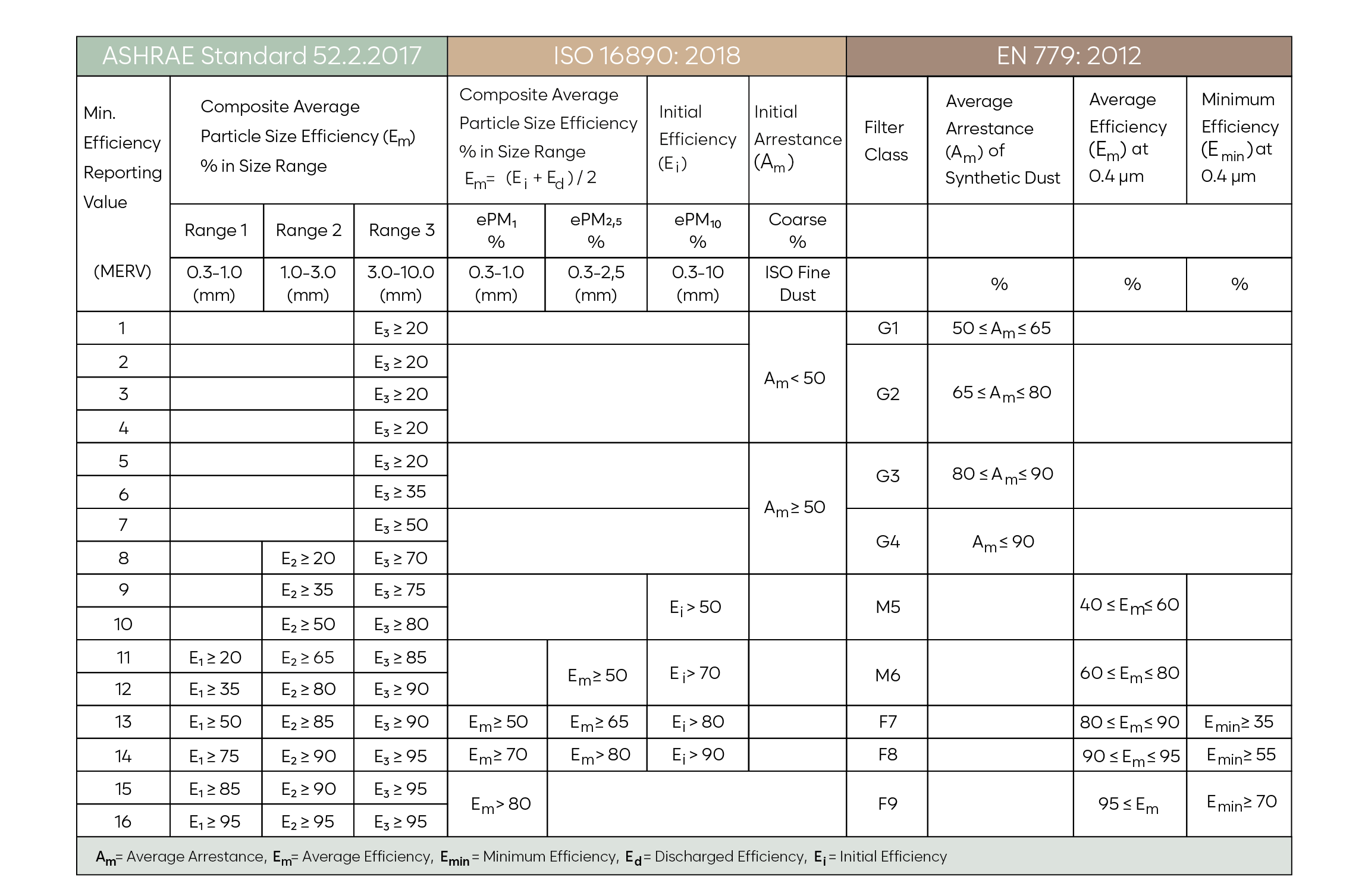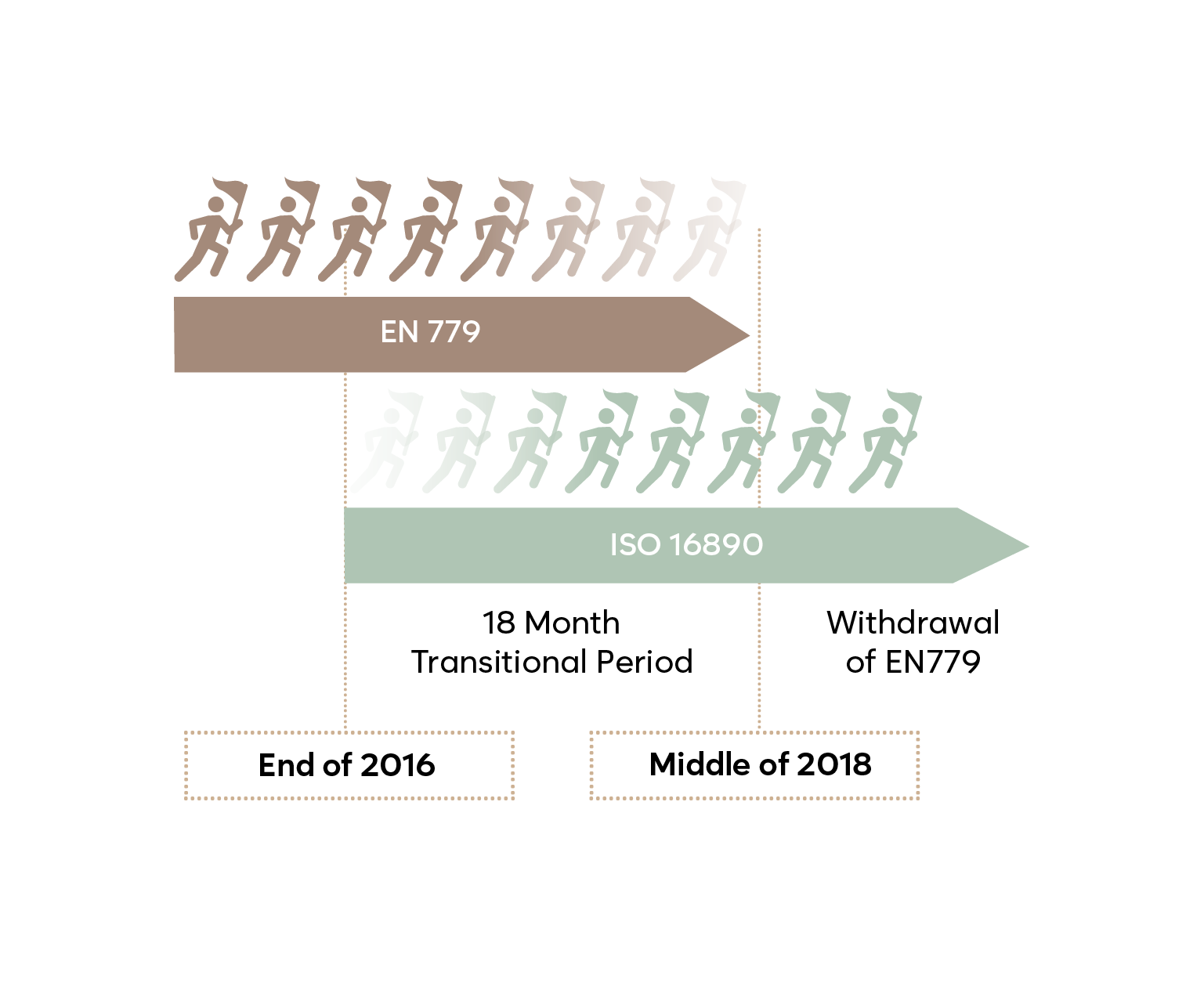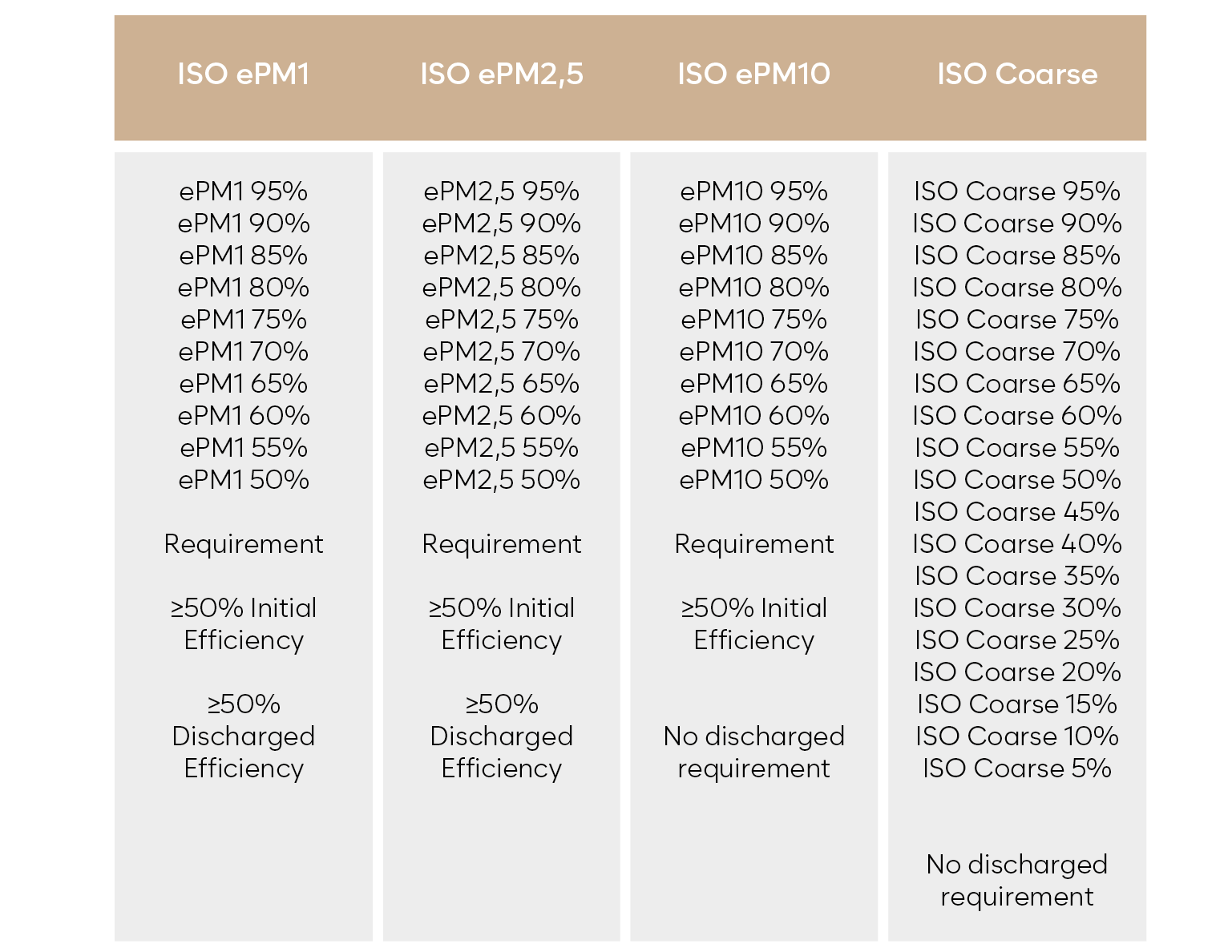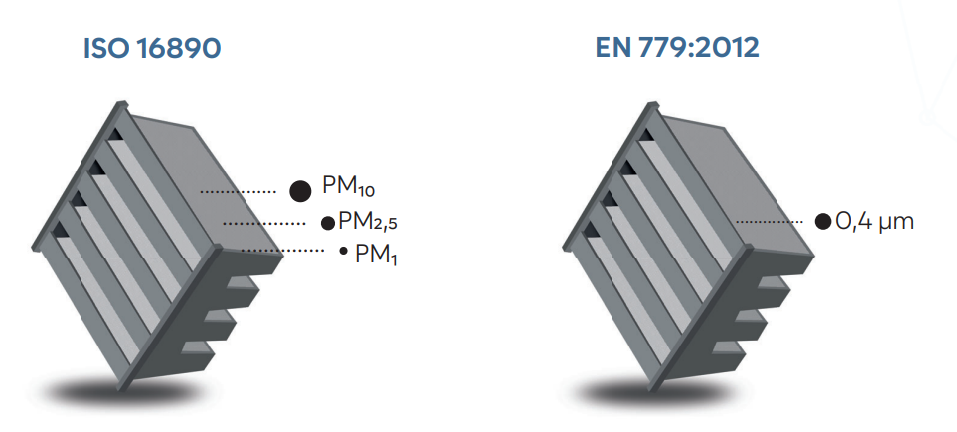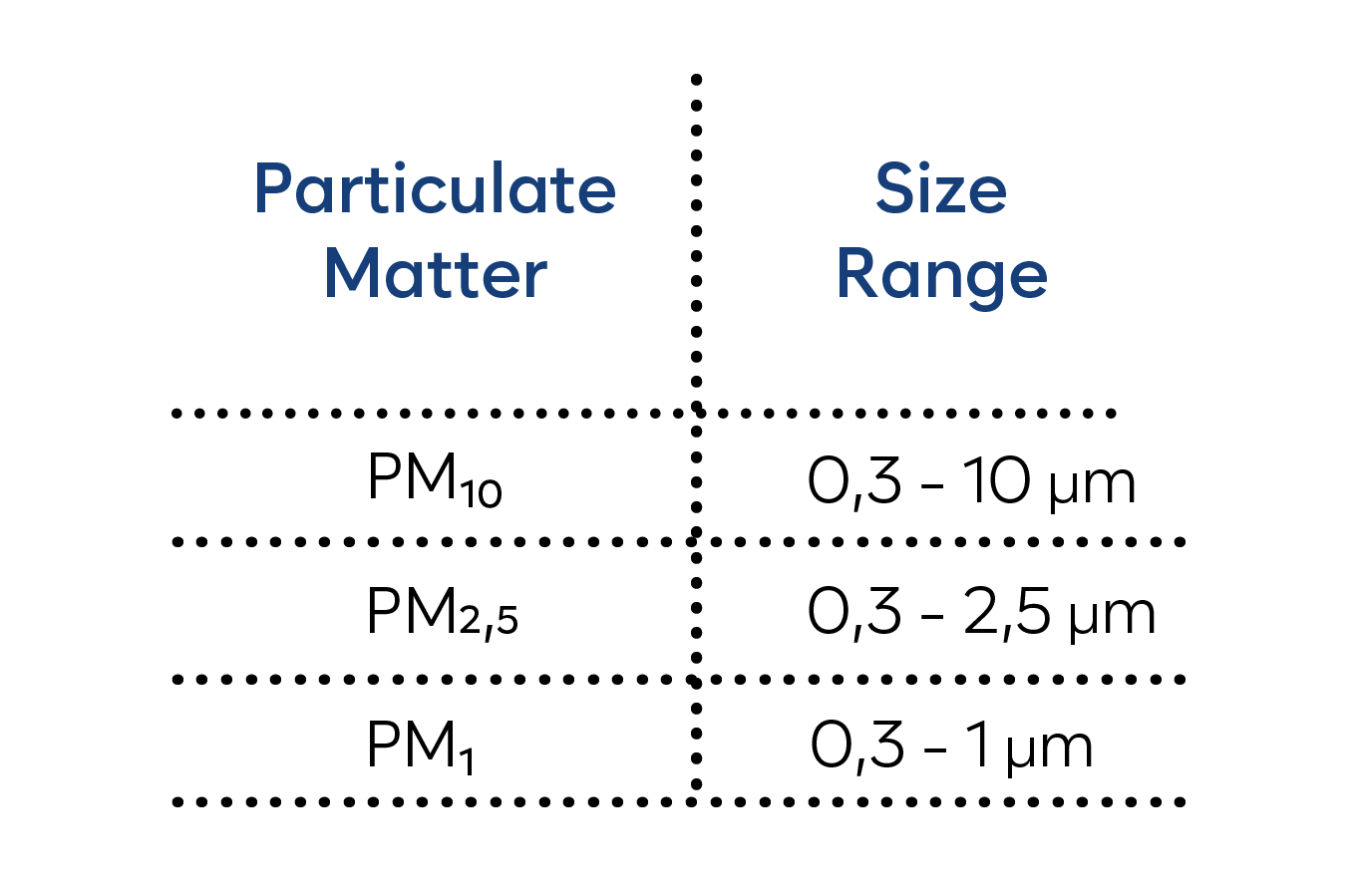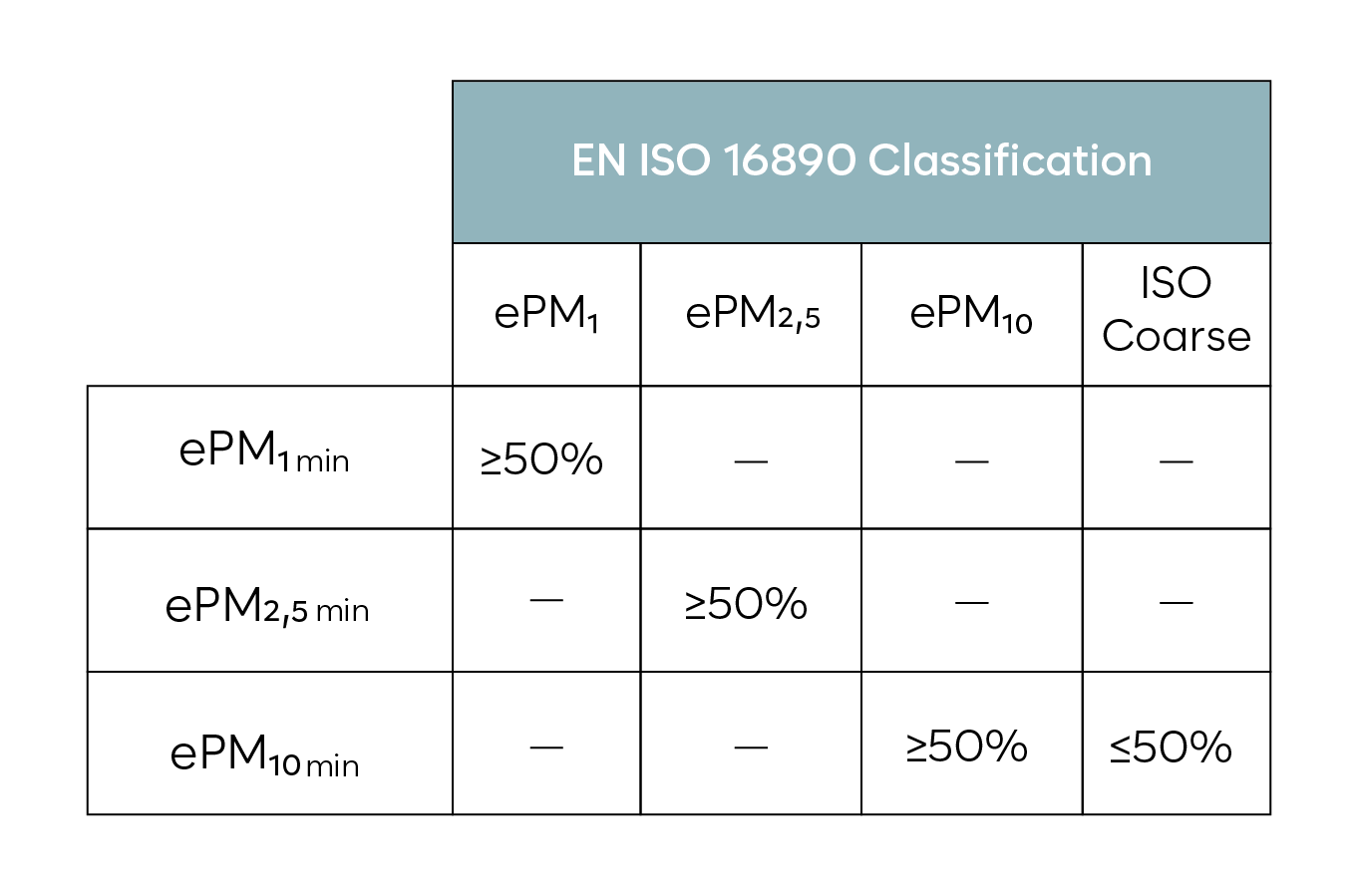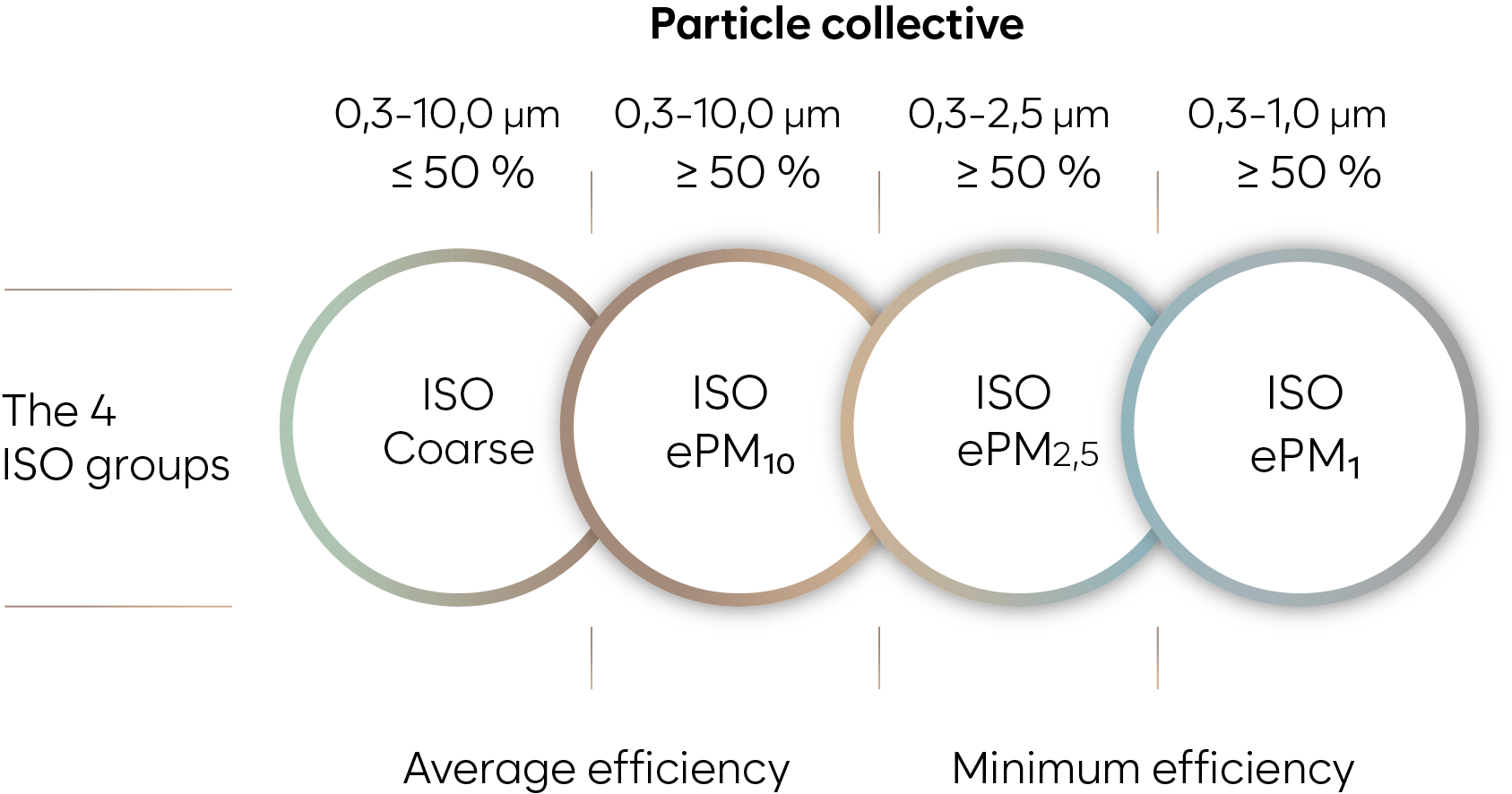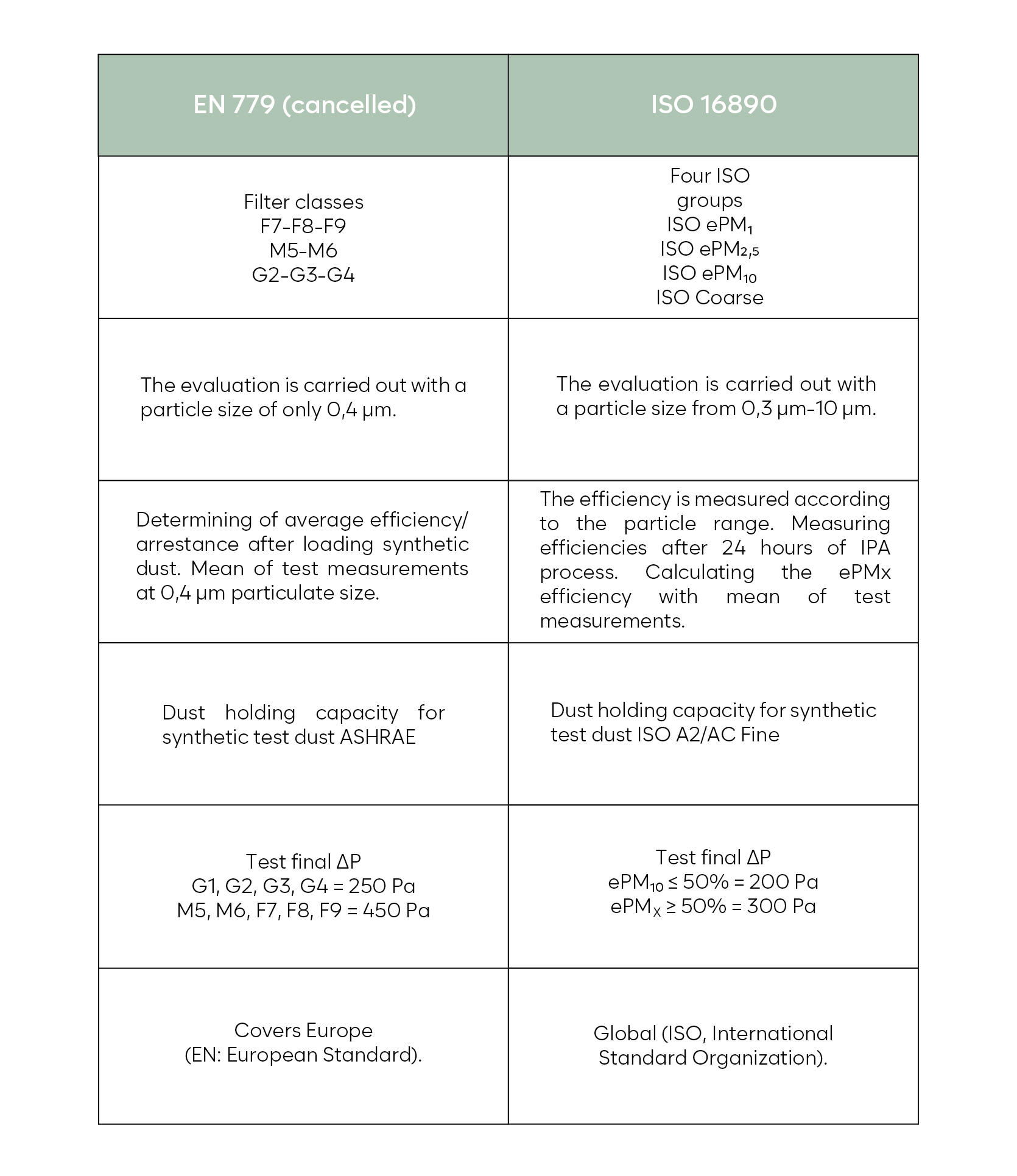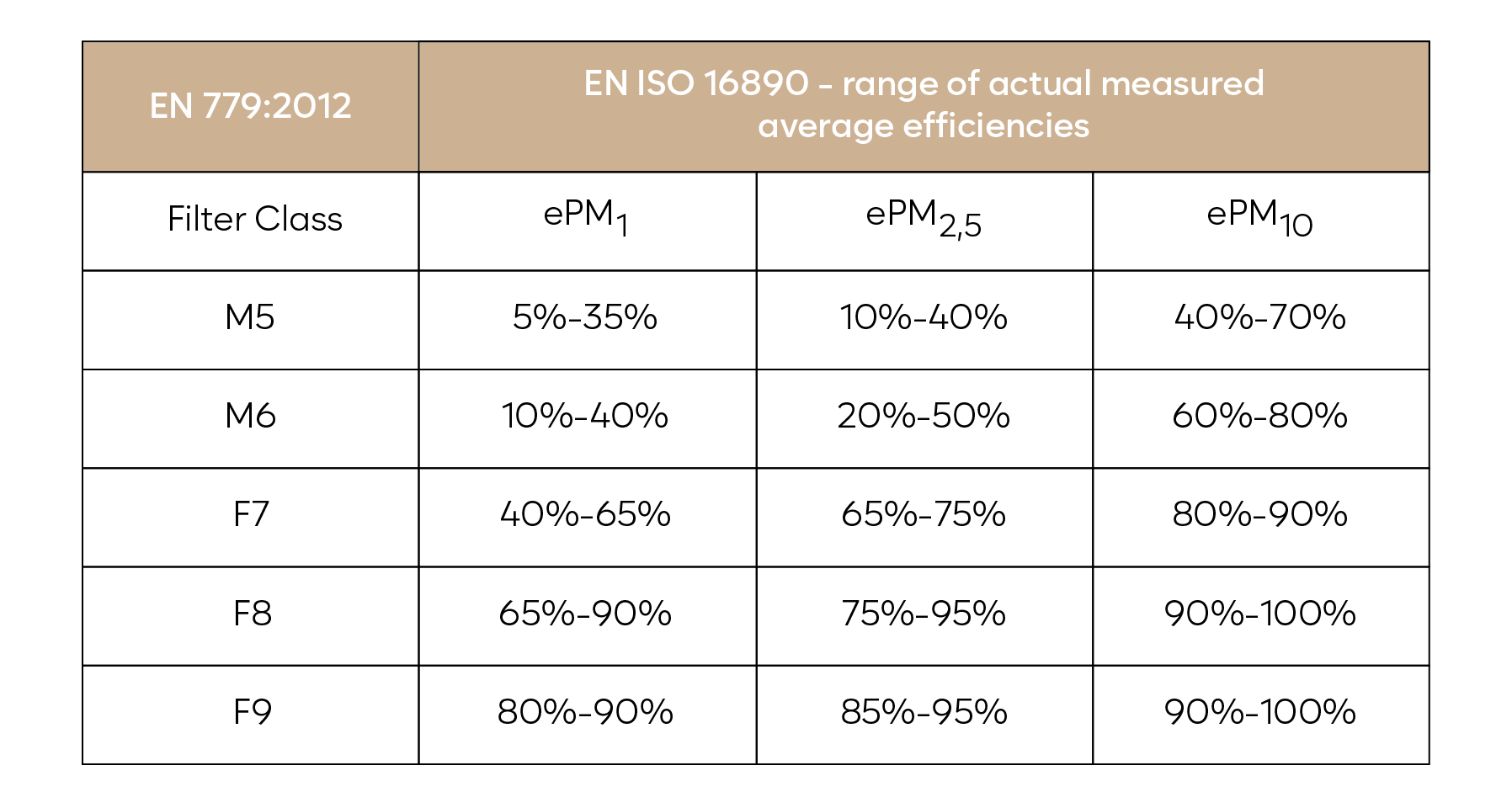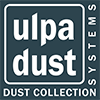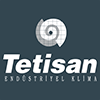ISO 16890 standard is used as a standard for air filter instead of EN 779 and ASHRAE 52.2. Measuring the efficiency of an air filter at a particle size range of 0,3 μm to 10 μm. The classification is carried out according to standard for particle size range 0,3-1,0 μm, 0,3-2,5 μm and 0,3-10 μm. The process is considered while choosing filters according to more detailed and global standard.
Why EN 779 replaced?
A synthetic powder called ASHRAE dust is used in the efficiency test of an air filter according to EN779: 2012 standard. The test is done by loading the filter with this powder in the laboratory environment. By this way, the efficiency of the filter can be calculated in the particle size of only 0.4 μm . In operating conditions, filters are exposed to pollutants with a variety of different sized particulate. Therefore, the data obtained in the laboratory is insufficient to determine the performance of an air filter.
ISO 16890 Test Procedure Step By Step
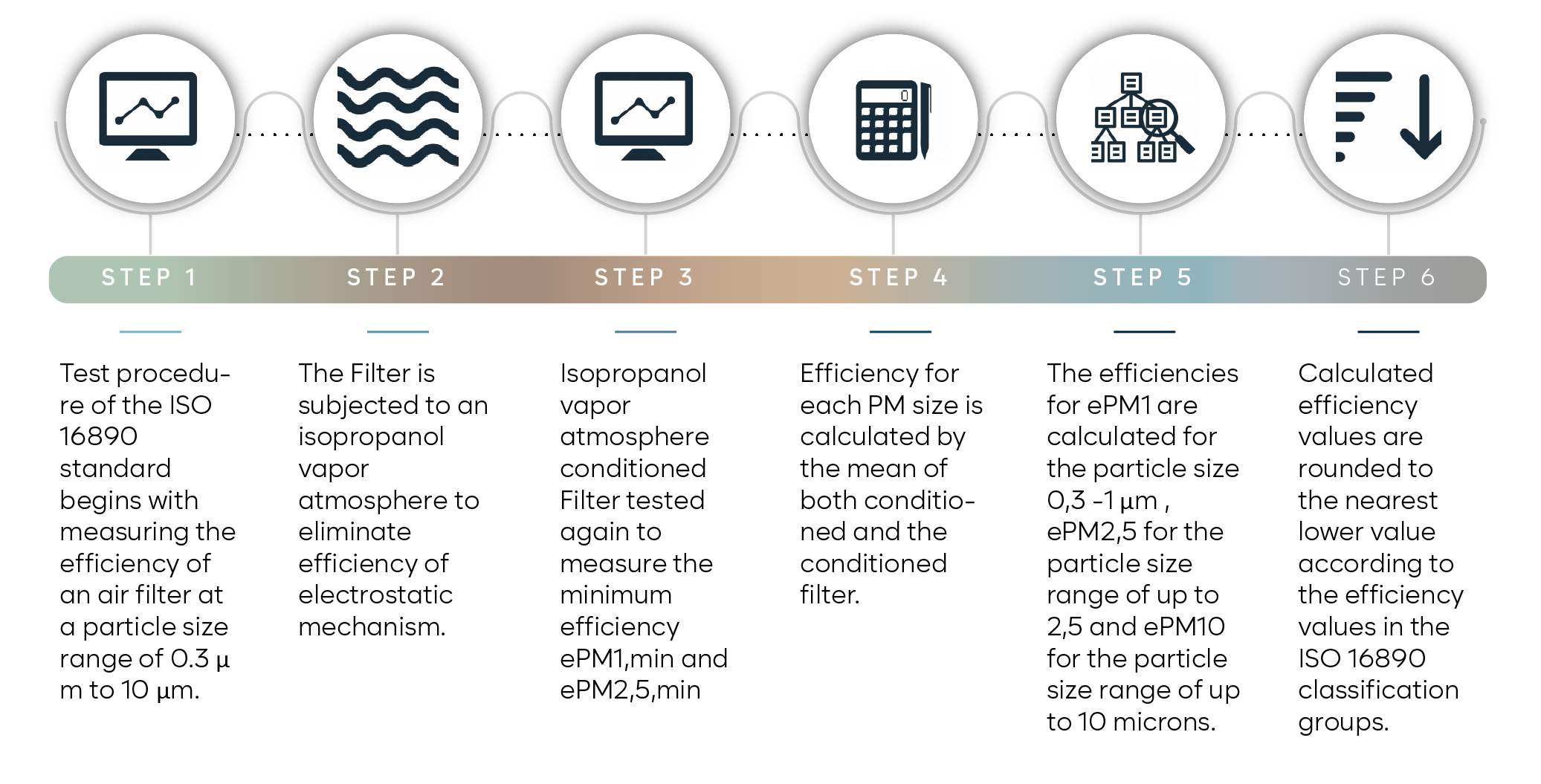
ISO 16890 Classifications
ISO 16890 standard considers for the particle size (Particulate Matter = PM) between 0,3 µm and 10 µm for efficiency evaluation.
For example; According to the test result, the F8 class V-Compact Filter is classified as “ISO ePM₁ 70%”. This means that the filter seperates %70 of PM₁ particles. The “e” stands for efficiency in combination with the particulate matter (PM).

